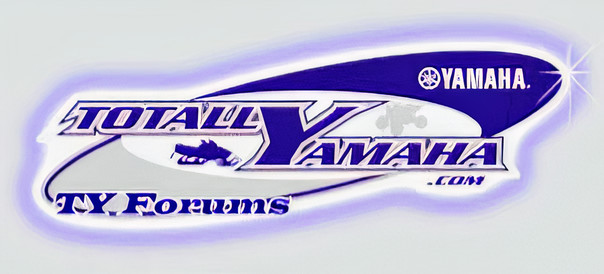JeepTherapy
New member
Can anyone explain the DCS theory of operation? I did a search for it and haven't found anything. It used to be my understanding that the DCS worked as a knock/ping sensor and retarded the timing. First in 3 degree increment with no indication, then another 3 degrees with indication, then a 6 degree drop into limp home mode. All based on actual detonation.
I would also like some quotable technical information to back up my theory. Can anyone point me in the right direction?
I would also like some quotable technical information to back up my theory. Can anyone point me in the right direction?
JeepTherapy
New member
Here is all I have found...
Yamaha's contribution is their DCS - Detonation Control System - available currently only on the triple-piped SRX700. A detonation sensor on the cylinder head detects the vibration characteristic of detonation and measures its amplitude. Three levels of system response are possible, depending upon detonation intensity. At the first level (light deto) the DCS dash-mounted indicator light at the left side of the panel flashes slowly and the engine control computer retards ignition timing enough to stop the detonation (in the range of 1-3 degrees). If detonation is heavier, a second level of response is triggered. The indicator light now flashes rapidly and timing is pulled back 3-6 degrees. The third stage - really more of a limp-home mode - retards the timing 6 degrees, limits revs to 6400, and continues to flash the indicator lamp rapidly.
Yamaha's contribution is their DCS - Detonation Control System - available currently only on the triple-piped SRX700. A detonation sensor on the cylinder head detects the vibration characteristic of detonation and measures its amplitude. Three levels of system response are possible, depending upon detonation intensity. At the first level (light deto) the DCS dash-mounted indicator light at the left side of the panel flashes slowly and the engine control computer retards ignition timing enough to stop the detonation (in the range of 1-3 degrees). If detonation is heavier, a second level of response is triggered. The indicator light now flashes rapidly and timing is pulled back 3-6 degrees. The third stage - really more of a limp-home mode - retards the timing 6 degrees, limits revs to 6400, and continues to flash the indicator lamp rapidly.
daman
New member
Yup that about sums it up.....
Also stock on my 2004 Viper S.
2datrl
2datrl
x2ryder
New member
How do you bypass this for racing in the grass and running high compression?
Well, I dont know about bypassing it but I have a few ideas that I applied to my 02 srx when I had it on the grass, you can remove the sensor and wrap it with white nylon pipe tape and this will help make it less sensative(insulate it slightly), and then I ran 45 pilots/135 mains in mine and used 100 octane fuel, the dcs light would just start to blink as I crossed the finish line in 500ft doing this stuff.
x2ryder
New member
Mr viper what were you running for compression? Also I am going to be running TMX 38's. What should I do for needles and jetting?
motor was bone stock with 32 miles on it, had 130lbs of compression on my guage and .060" squish.
as for the 38mm carbs, probally guessing start off with stock pilots, needles in middle and around a 310 main, make short burst and let the plugs and piston wash guide you as to the jetting changes required.
as for the 38mm carbs, probally guessing start off with stock pilots, needles in middle and around a 310 main, make short burst and let the plugs and piston wash guide you as to the jetting changes required.
x2ryder
New member
Thanks
Fro
New member
What happens if you HAVE to run 87 cuz there's nothing else around & you're out? Mine's a '99...What can happen?
YAMMIEGOD3:16
Active member
WALK HOME BEFORE YA PUT THAT CRAP IN YOUR SLED. 3:16 (yammie tony)
Last edited:
Skidooslayer687
Member
lol well said lol
daman
New member
'99's didn't have the DCS,but Yea try not to run that crap,let her setFro said:What happens if you HAVE to run 87 cuz there's nothing else around & you're out? Mine's a '99...What can happen?
Fro
New member
What happens?
JeepTherapy
New member
Fro said:What happens?
will probably cause detonation.
The Viper manual calls for;
Regular unleaded gasoline (Pump Octane ; 88 or higher)
Research Octane; 93 or higher (for Europe)
SX manual;
Regular unleaded gasoline (Pump Octane; 8
Research Octane; 93 (for Europe)
So I would think as long as your not on it hard it would be fine? I don't know as I have never ran it. I will assume people feel it will cause detonation and they have to run premium. I almost always ran 88 octane in mine. I have never seen the DCS light except for start-up. That leads me to believe I am leaving some performance on the table. I would think if I was tuned for max performance I wouldn't get away with running regular 88 octane and not see the DCS light.


